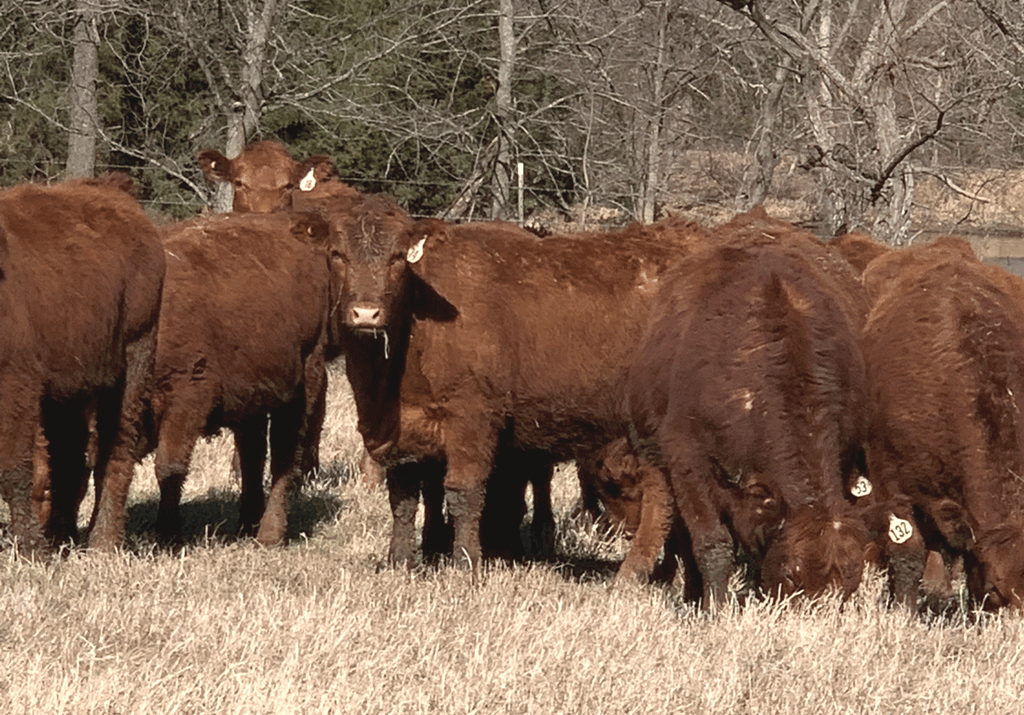Mark Z. Johnson - Oklahoma State University Extension
With much of Oklahoma in various degrees of drought over the past several months, winter grazing has been generally poor for most of our state this year. If you are selecting yearling heifers as replacements for the cowherd there are several things to keep in mind:
Typical “best management” goal for development of replacement heifers is to have them at 65% of their mature weight by 14-15 months of age. Research indicates 90% or more of heifers reaching this goal will be cycling at the beginning of breeding season and on target to calve at two-years of age.
Research also indicates that if heifers are at 55% of their mature weight by 14-15 months of age, only half will be cycling. If this is the situation you find yourself in right now and your planned breeding season is in the near future, adjust your rate of heifer retention up accordingly, pregnancy check heifers as soon as possible after pulling bulls and market the open heifers as yearlings this summer.
If your heifers are behind on weight right now and your breeding season is still 30 – 60 days away, there is still time to catch them up. Previous research indicates heifers gaining approximately only a half-pound/day for the first 150 days post-weaning can be fed to gain 2.5 pounds/day for the 45-60 days immediately prior to breeding season to meet target weight and still have optimum breeding performance. Recent rains have added to the possibility this could still be done on cool season grass pastures. Regardless of how you plan to feed heifers to get them to target weight, an ionophore in your feeding program will be cost effective, typically adding an additional .1-.2 pound /day of gain.
Fertility is very financially important in cow-calf operations. For spring calving herds, now is the time to implement management practices to keep heifers on track to calve at two and primed to become productive cows.
Reference: Chapter 29, OSU Beef Cattle Manual, 8th edition














